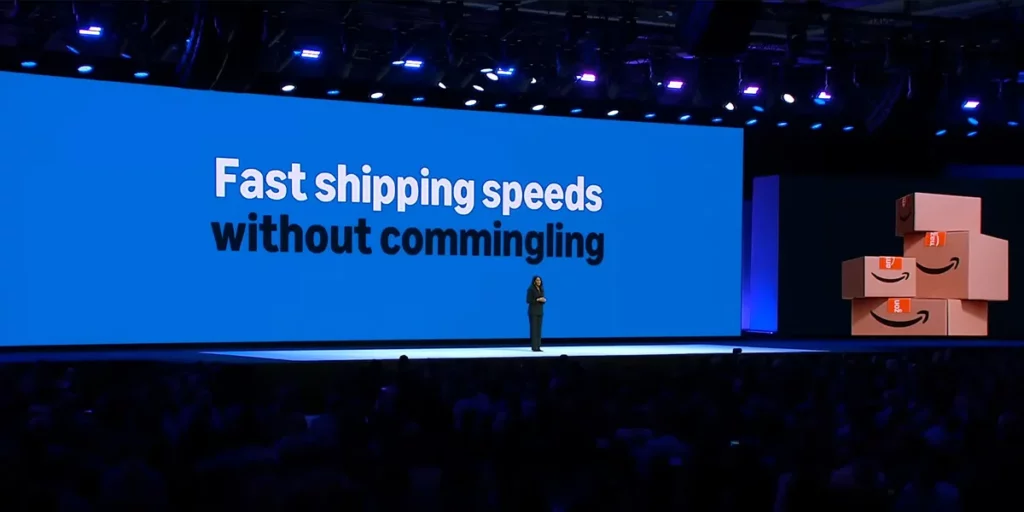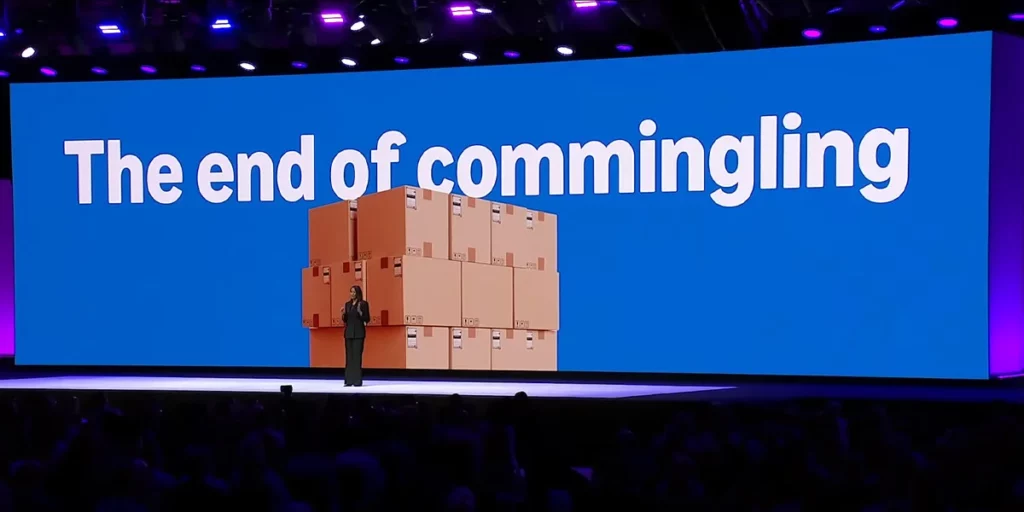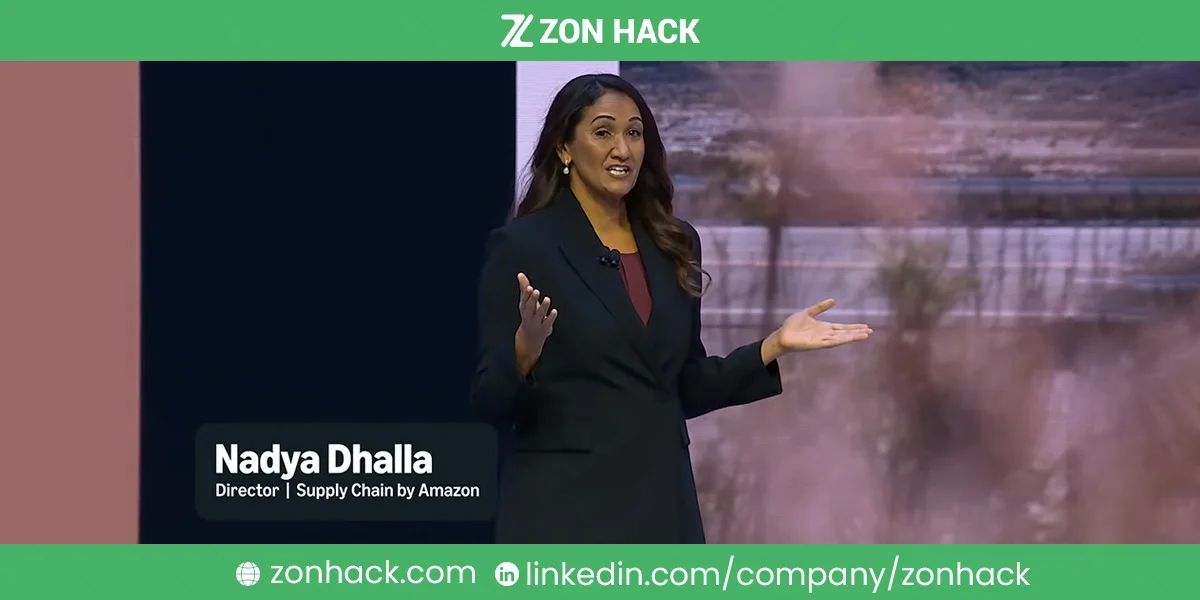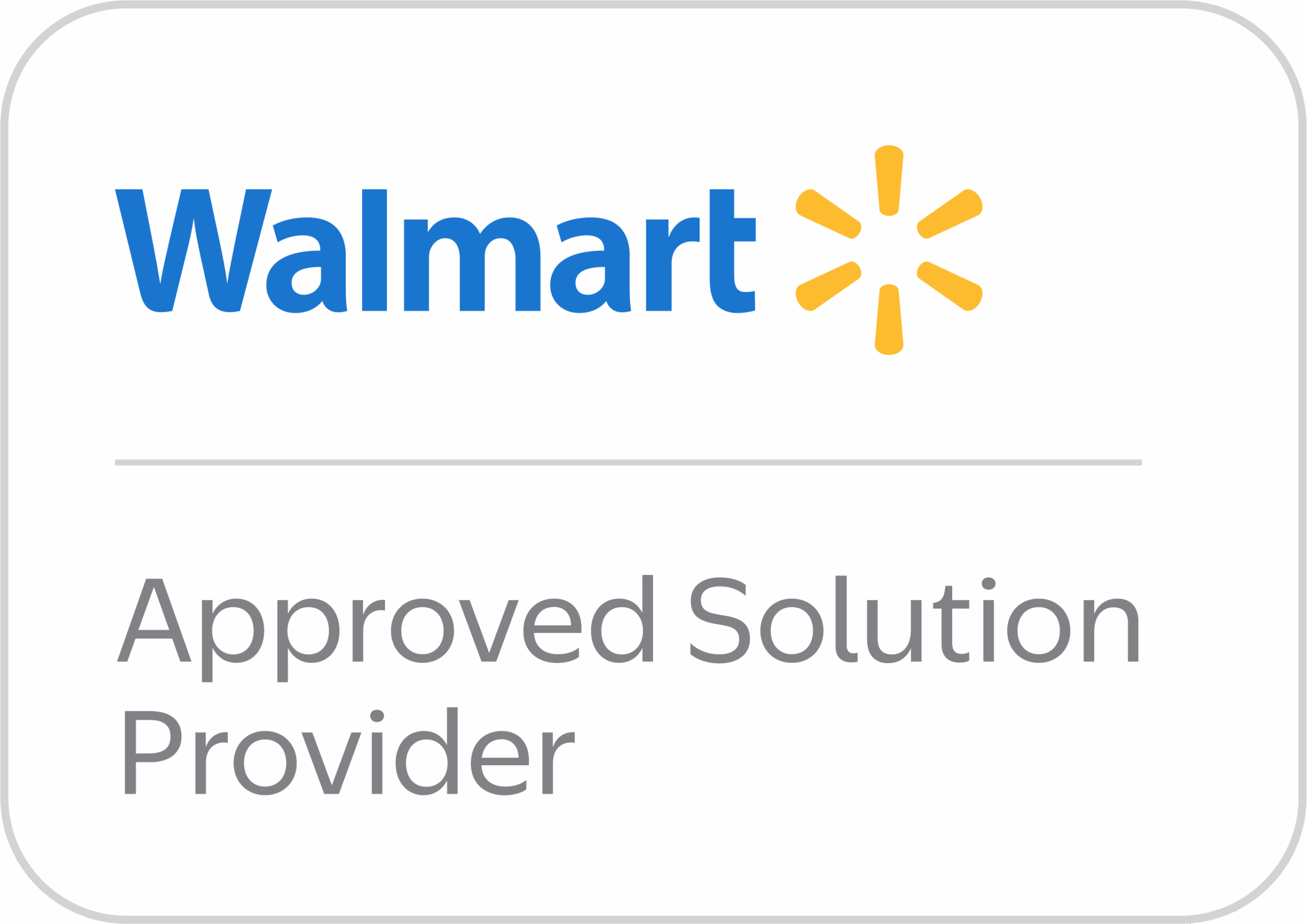Nadya Dhalla on Supply Chain Management Updates
Speaker: Nadya Dhalla, Director, Supply Chain by Amazon
Who this is for: Brand owners, supply-chain leads, and ops managers using FBA
The headline change
Nadya announced it plainly: “we will be ending commingling practices across our supply chain later this year.” That means orders placed with your brand will ship from your inventory, and returns and FBA removals will be your units coming back to you. For brands using manufacturer barcodes, she tied it to a cost win. In the last 12 months, brand owners spent “an estimated $600 million” to resticker products that already had a manufacturer barcode. Ending commingling removes that spend and the split workflows it created.

Why this is happening now
Commingling helped Amazon promise faster delivery by sourcing the nearest identical item. Nadya’s point was that the marketplace has changed. Most sellers are now brand owners, inventory positioning is stronger, and the speed advantage from commingling has narrowed. In her words, the costs of stickering now outweigh the savings commingling delivered. If fast delivery can be met from your own network placement, the operational overhead of sticker programs becomes waste.

What changes in your day to day
When the rollout completes, three things matter immediately.
- No more mandatory stickering for brand owners with manufacturer barcodes. Nadya said this directly, which removes label labor and 3P prep fees.
- Unified inventory across channels. “You’ll no longer have to preallocate stickered inventory to Amazon and non-stickered inventory for other sales channels.” You can hold one pool and direct it where needed.
- Cleaner provenance for returns and removals. The units you receive back are yours, which simplifies root-cause analysis and refurb decisions.
You will “start to see these changes rolling out over the next few months.” Plan for a transition window where both behaviours may exist in parallel.
How to prepare without drama
- Barcode hygiene first. Confirm every sellable has a valid manufacturer barcode tied to the correct ASIN and variation. Fix duplicate GTINs, mismatched families, and any lingering FNSKU-only listings that should migrate.
- Update prep instructions. If a 3PL or factory labels today, remove stickering from the SOP. Share the effective date once Amazon posts it for your catalog to avoid mixed inventory.
- Rework inbound plans. Shift carton and pallet labeling to reflect barcode-only flows. Validate that ASN templates and package labels match the non-sticker path.
- Tighten returns triage. Since the returned unit is yours, define disposition rules for open box, light refurb, and liquidation. Document how evidence is captured to support SAFE-T and reimbursement claims.
- Replan multi-channel allocation. Use the single pool advantage. Align Shopify or wholesale pulls with FBA sends so seasonal demand does not starve one channel.
Controls to keep risk low during the switch
- Dual inventory audit. For 60 to 90 days, sample inbound and outbound units to ensure manufacturer barcode mapping is consistent and there is no legacy commingled bleed.
- Exception watchlist. Track categories with historical commingling edge cases, like consumables or accessories with near-identical GTINs. Escalate mismatches early.
- Claims and QC checkpoints. Compare return reasons against FC findings. If damage rates shift, review packing specs and carrier handoffs before scaling.
- Catalog lock discipline. Freeze variation merges and GTIN edits during your cutover window unless they unblock compliance.
What to measure so you know it is working
- Sticker labor minutes or 3P prep charges removed from COGS
- Return provenance accuracy and time to disposition
- Stock pool flexibility across channels and weeks of cover by channel
- Delivery promise stability after decommingling
- Claim recovery rate and SAFE-T wins tied to cleaner provenance
Where ZonHack can help if you want backup
We can audit barcode integrity across your catalog, remove stickering steps from factory and 3PL SOPs, and design a clean returns decision tree now that units route back to you. During the transition, we can watch exceptions in the categories that tend to mislabel and keep a weekly scorecard so finance sees the cost removal in COGS.
The thread across sessions
Mary Beth raised the floor on product pages. Jay showed creative that learns while you scale. Chris put an operator on your desk with Seller Assistant. Claire turned policy into guidance that prevents lost days. Keri gave you the analytics to choose profitable moves. Nadya just removed a structural cost and gave you one inventory pool to control. The common theme is speed with control, and fewer steps between intent and outcome.Coming up next….
Beryl Tomay
Returns customer experience and operational flows that protect CX while reducing seller pain.




